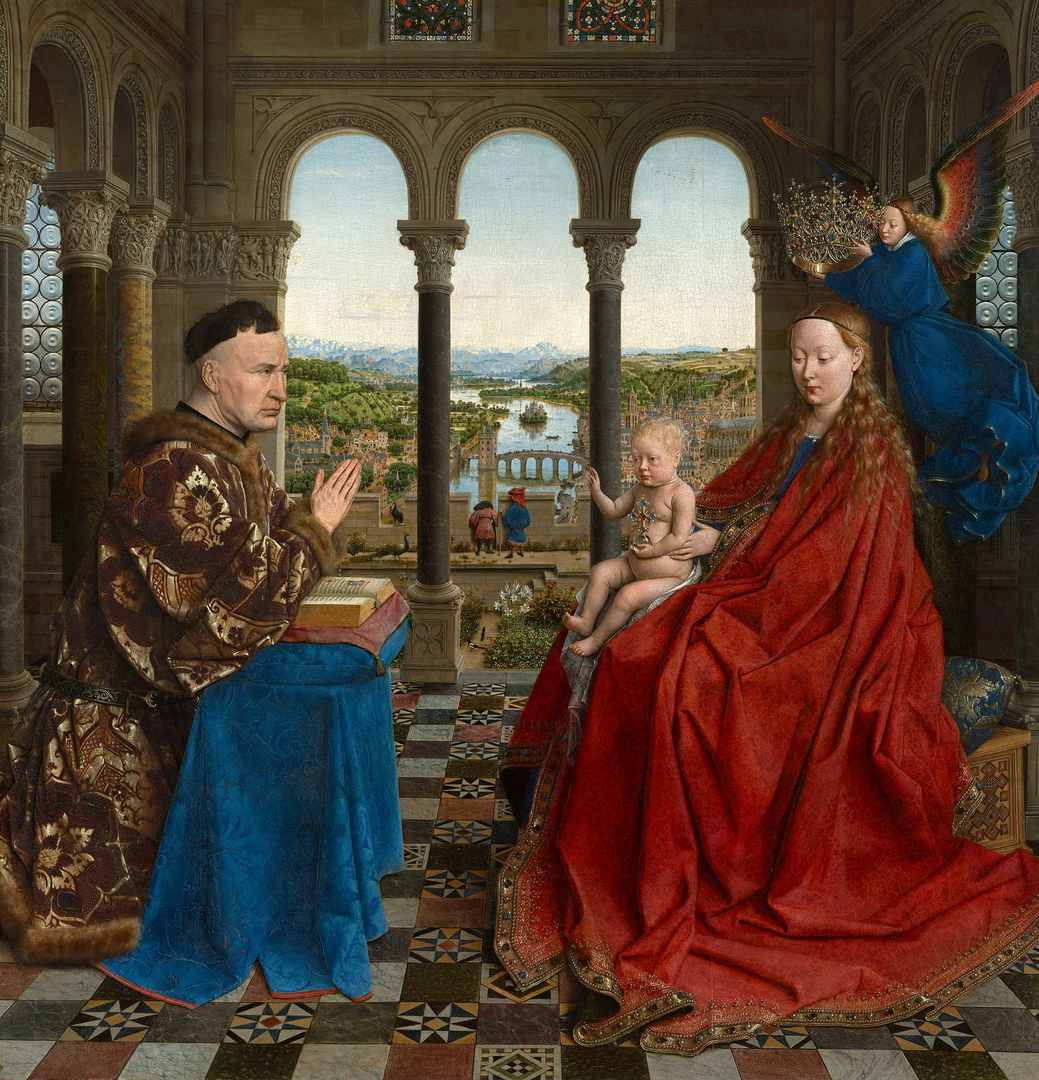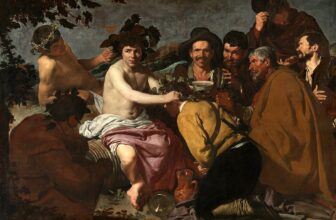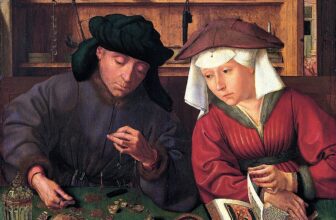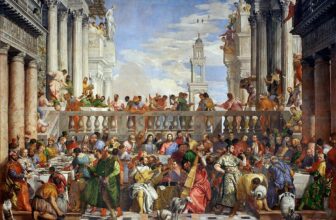
The Meaning and History of Madonna of Chancellor Rolin
The Madonna of Chancellor Rolin is a masterpiece of early Netherlandish painting, created by the renowned artist Jan van Eyck around 1435. This extraordinary artwork is both a devotional image and a display of wealth and power, combining religious iconography with an unprecedented level of realism.
The painting presents a deeply symbolic representation of the Virgin Mary and the Christ Child, witnessed by Chancellor Nicolas Rolin, a powerful figure in the Burgundian court. But what is the deeper meaning behind this painting? Who was Chancellor Rolin, and why was this artwork commissioned? In this exploration, we will answer these questions and examine the significance of Madonna of Chancellor Rolin in art history.
Who Was Chancellor Rolin?
Nicolas Rolin (1376–1462) was a prominent figure in 15th-century France. He served as Chancellor to Philip the Good, Duke of Burgundy, for over four decades. As one of the most influential men in Burgundy, Rolin played a crucial role in political negotiations, diplomacy, and legal affairs. He was known for his administrative acumen and for helping consolidate the power of the Burgundian state, which was one of the wealthiest and most powerful political entities in Europe at the time.
Rolin was also a devout Christian and a significant patron of the arts. His deep religious convictions are evident in the commissioning of several religious artworks and the foundation of the Hospices de Beaune, a hospital for the poor that still stands today. His wealth and influence allowed him to commission one of the greatest painters of his time, Jan van Eyck, to create Madonna of Chancellor Rolin.
The Meaning of the Madonna of Chancellor Rolin
Jan van Eyck’s painting is a strikingly detailed and symbolic work of art that conveys themes of divine grace, power, and devotion. The composition is meticulously structured, with each element serving a deeper theological or social meaning.
Religious Symbolism
At the center of the painting, the Virgin Mary sits on a throne, holding the Christ Child on her lap. This depiction follows the traditional iconography of the Madonna enthroned, symbolizing her role as the Queen of Heaven. The Christ Child raises His hand in blessing toward Chancellor Rolin, who kneels in a gesture of devotion and humility.
The interaction between Rolin and the Virgin Mary suggests a form of direct intercession, emphasizing the power of prayer and the divine grace bestowed upon the faithful. This arrangement also reflects the growing trend of personal devotion in 15th-century religious art, where patrons desired a more intimate connection with the divine.
Wealth and Power
The setting of the painting is a richly decorated loggia that overlooks a breathtaking landscape. The intricate architectural details and opulent decorations reflect Rolin’s immense wealth and status. The columns, adorned with carvings of biblical scenes, serve as a reminder of divine judgment and righteousness.
Beyond the loggia, a vast, meticulously rendered cityscape stretches into the distance. The landscape symbolizes the unity between earthly and heavenly realms, reinforcing the idea that divine grace extends into worldly affairs. The presence of an elaborate city suggests Burgundian prosperity and serves as an indirect testament to Rolin’s contributions to the duchy’s success.
The Angels and the Divine Realm
Above the Virgin and Child, two angels hold a richly decorated crown above Mary’s head, symbolizing her coronation as Queen of Heaven. This celestial element enhances the painting’s theological significance, emphasizing the divine nature of Mary’s role in Christian doctrine.
The angels’ presence also underscores the contrast between the earthly and heavenly spheres. While Rolin is a powerful earthly figure, his position in the painting is still subordinate to the Virgin and Christ, reinforcing the idea that temporal power is secondary to divine authority.
Who Commissioned the Madonna of Chancellor Rolin?
The painting was commissioned by Nicolas Rolin himself. As a man of immense influence and piety, Rolin sought to create a lasting legacy that would affirm both his devotion and his status. Art patronage was a means of securing spiritual merit and demonstrating one’s influence, and Rolin was no stranger to this practice.
His decision to commission Jan van Eyck, one of the most celebrated painters of his time, suggests a deliberate effort to produce an artwork of unparalleled quality. Van Eyck was known for his mastery of oil painting, which allowed for exquisite details and lifelike realism, making him the perfect choice to execute such an ambitious work.
By commissioning this painting, Rolin not only ensured his place in religious history but also solidified his public image as a devout and powerful figure in Burgundian society.
Where Is the Madonna of Chancellor Rolin Today?
The Madonna of Chancellor Rolin is currently housed in the Louvre Museum in Paris, France. The painting became part of the French national collection after the secularization and redistribution of church property during the French Revolution.
Today, it remains one of the Louvre’s prized possessions, admired for its intricate details, luminous color palette, and unparalleled realism. It continues to attract art historians and visitors from around the world who seek to study and appreciate Jan van Eyck’s genius.
The Artistic Legacy of the Madonna of Chancellor Rolin
Van Eyck’s Mastery of Oil Painting
One of the most striking aspects of this painting is Van Eyck’s technique. He was a pioneer of oil painting, which allowed him to achieve extraordinary levels of detail, depth, and luminosity. The transparency and layering of colors create a sense of realism that was groundbreaking for the time.
His meticulous attention to light and texture is evident in the reflective surfaces of the marble floor, the luxurious fabrics, and the shimmering landscape beyond the loggia. These elements contribute to the overall effect of divine presence and material splendor.
Influence on Later Art
Van Eyck’s work had a profound impact on the development of Northern Renaissance art. His mastery of perspective, atmospheric depth, and meticulous detail influenced generations of artists. The Madonna of Chancellor Rolin serves as an exemplary model of how religious themes could be intertwined with personal portraiture, a concept that became increasingly popular in Renaissance art.
Artists such as Rogier van der Weyden, Hans Memling, and even the Italian Renaissance painters studied Van Eyck’s techniques, incorporating similar elements into their works.
The Madonna of Chancellor Rolin is more than just a devotional painting; it is a masterful blend of religious symbolism, personal ambition, and artistic innovation. Nicolas Rolin, as a powerful chancellor and patron, sought to immortalize his faith and influence through this stunning composition. Jan van Eyck, through his unparalleled skill, brought this vision to life with breathtaking detail and depth.
Today, as it stands in the Louvre Museum, the painting continues to captivate audiences with its richness and complexity. It serves as a testament to the enduring power of art to bridge the human and divine, the earthly and the heavenly.
Through this masterpiece, we gain insight into the mind of a man who sought to leave his mark on history, not only through politics but through beauty, faith, and artistic patronage.




